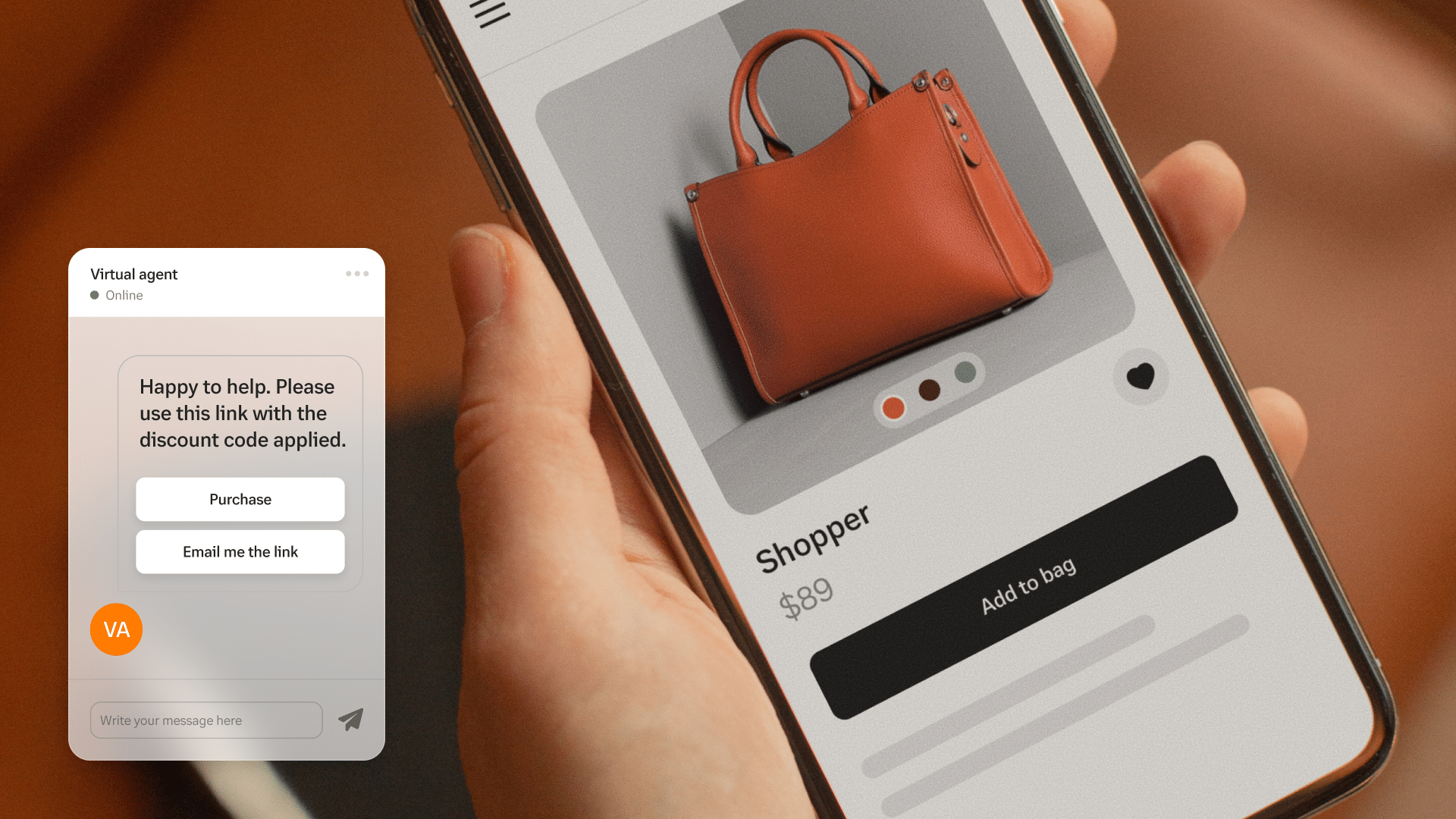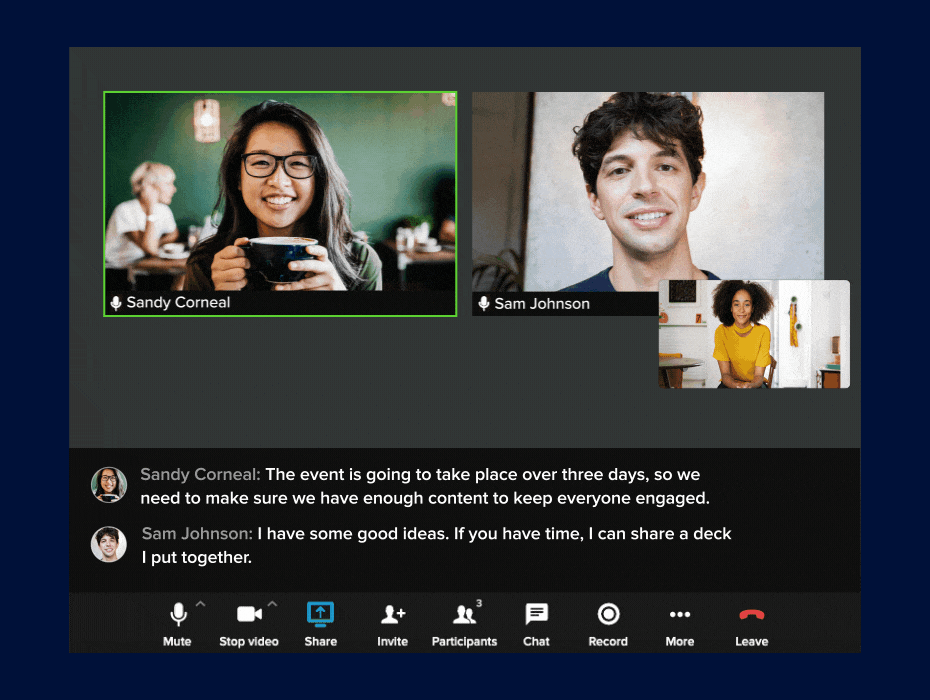There are six billion smartphone users worldwide,1 with 270 million in the US alone.2 Many of us use our mobile devices for everything because it’s faster and more convenient—so why should customer service be any different?
Whether you’re upgrading your contact center or undergoing a company-wide digital transformation, adding digital channels will help you improve the customer experience and make life easier for your agents.
So let’s get right into it. Today, we’ll cover:
- What digital customer service is
- The benefits of digital customer service
- Essential tools for digital customer service
⭐️⭐️⭐️⭐️⭐️ Ready to offer 5-star customer service? Get strategies for every stage of the customer journey with this free eBook.
What is digital customer service?
Instead of traditional customer service, where call centers handled phone calls or face-to-face interactions, the digital version involves providing support through digital channels such as:
- Chat
- Text messaging (SMS)
- Social media
- Messaging apps
- Video
Customers can choose their preferred channel to get in touch with a business and interact using mobile apps on smartphones and tablets. Digital customer service is delivered through a combination of automated tools and human agents, making for an enhanced customer support experience.
Digital technology means modern contact centers can operate virtually, using CCaaS (contact center as a service) or UCaaS (unified communications as a service) software based in the cloud. Platforms like RingCX ensure a seamless experience across channels and devices.
What are the benefits of digital customer service?
Convenience
Digital customer service opens up a world of convenience for customers and staff. While agents can work remotely on their own devices, customers can get in touch whenever and wherever is most convenient for them. While some customers might still prefer a phone call, digital customer service gives everyone a way to reach out that feels comfortable: email, a helpful chatbot, social media, or even a text message.
Speaking of convenience: An omnichannel customer service platform puts all of these channels in the same place, so your team never misses a message. Here’s what that looks like in RingCX:

This kind of omnichannel support reduces customer effort, which can really impact customer satisfaction in a positive way.
Speed
Digital technology means customer issues can be resolved faster, since it’s easier to make contact, and automation speeds up average handling time. This may include:
- Routing messages and calls to the right agents
- Having instant access to customer details
- Offering self-service options
Agents can also handle multiple text or chat conversations simultaneously, so there’s less chance of anyone having to wait. That means a better first contact resolution rate for you, and less headache for your customers: an ultimate win-win.
Engagement
Because the digital customer experience is faster and more convenient, your agents can focus on going beyond simple resolution and delighting customers with personalized experiences. And the omnichannel format also helps your business to reach (and engage with) a wider audience.
Lower costs
Digital interactions tend to cost less than those on traditional service channels in terms of “cost per contact” (although it’s possible to choose highly affordable telephony packages and combine them with digital services).
If you transition to a virtual contact center, you’ll save money on office space and equipment. Cloud-based platforms also typically offer pay-as-you-go subscription pricing. Digital tech means agents are more productive, and the less-stressful environment improves customer loyalty and agent retention.
Scalable
For the same reasons, digital customer service is more scalable than its traditional counterpart. The ability to work remotely means that staff can be recruited from anywhere, and virtual contact centers can operate 24/7.
Subscription pricing makes it simple to add or remove new users as demand fluctuates, with no need to install physical phone lines (or new computers, as agents can use their own devices). As the technology expands, so will your company’s reach.
Future-proof
As the world grows increasingly digitized, offering customer service on digital channels becomes a necessity. The technology will only get more advanced, so don’t get left behind!
Companies need to “go digital” in order to remain competitive and meet customer expectations—digital customer service done well can be a key differentiator that sets you apart from your rivals.
Essential tools for digital customer service
If you’re going to offer digital customer service, you need the best tech stack to ensure a seamless experience for both customers and agents. Your digital customer service strategy should identify all the tools you’ll need, ideally combined in a unified solution for maximum efficiency.
Although digital channels are growing in popularity, some customers still prefer to use the phone—and oftentimes a digital inquiry will escalate into a phone call. So, it makes sense to choose a single customer engagement platform where you can manage all interactions.
Top tool: An all-in-one digital customer service platform
Putting all of your communication channels in the same place saves your team a lot of time and ensures your customers’ questions don’t fall through the cracks. It might even save you some money in the long run… and a lot of headaches when it comes to onboarding multiple new tools at once.
Here’s where we toot our own horn: RingCX is an easy-to-navigate hub for your team to receive, route, and respond to every kind of customer query. Your team can connect with the customers and each other across channels in order to resolve issues more quickly:
Here are some features to look out for in your all-in-one solution:
Self-service

Many customers prefer self-service—in fact, 69% of them will try to troubleshoot problems on their own first.3
Here are some ways you can improve self service:
- IVR (interactive voice response) to guide customers through options
- Chat bots that respond to common queries before handing customers to agents
- Resource centers and knowledge bases to empower customers, like an interactive FAQ page on your website
Inbound automation
Look for a solution that harnesses artificial intelligence and machine learning to analyze digital interactions, so you can always route them to the right agent the first time. With RingCX, you can define routing rules based on skills, availability, capacity, or any other criteria you like.

Outbound automation
It’s also helpful to automate outbound customer interactions, using preview, progressive, or predictive dialers to improve speed and accuracy when dialing phone numbers. With automated scripts tailored to each customer, you can deliver consistent, on-brand experiences.
Video with screen share
Video and screen sharing lets IT support teams diagnose technical issues remotely and talk customers through troubleshooting or setting up new products. Agents could also send pre-recorded video tutorials or invite customers to attend webinars, since video calls can add a more personal touch. With RingCX, you can even get closed captioning for better accessibility options for your customers:

Integrations
Alongside multiple digital channels, customer service teams can access additional tools by integrating popular CRMs and other back-end systems. CRM integration allows agents to view customer details at a glance and personalize interactions, as well as automatically adding new data.
The average worker loses a full hour each workday just toggling between various work apps,4 so accessing them all from one place is a real time-saver. RingCX enables chat with customers on WhatsApp and Facebook Messenger, and it syncs with all the popular social media platforms.
Analytics

Digitizing your contact center also gives you the chance to gather more data and to evaluate it using advanced analytics tools. Real-time dashboards and reports display the metrics on everything from customer behaviors and preferences to agent performance.
Agent monitoring, customer surveys, and sentiment tracking help you spot ways to improve the customer journey, and the data is also handy for creating personalized service. Here’s how it looks in RingCX:

Reliability and security
With speed and convenience being watchwords, you can’t afford for your digital system to crash. You don’t have to worry about that with RingCentral’s 99.999% uptime, and the cloud-based architecture reduces the need for in-house IT staff.
Delivering excellent customer care means keeping customer data safe, and digitally stored information is safer than physical paperwork. RingCentral backs that up with seven layers of security.
Digital customer service: A must-have for better customer experience
Digital customer service brings convenience, efficiency, cost savings, and customer happiness. However, digital channels don’t work in isolation—it’s best to offer them alongside traditional channels to give customers the widest possible choice.
Support agents need to collaborate with other teams (IT, accounts, sales, and marketing) to solve issues quickly, which is why RingCX is a good choice. As well as digital functionality, you can keep all conversations with colleagues and customers in one handy place.
Remember: Around half of customers say they would switch to a competitor after just one bad experience!5 Providing a seamless customer service experience is essential, and embracing the digital world is the way to make it work.
Improve your digital customer service game with RingCX! Start here.
Footnotes:
- https://www.statista.com/statistics/330695/number-of-smartphone-users-worldwide/
- https://www.statista.com/statistics/748053/worldwide-top-countries-smartphone-users/
- https://d1eipm3vz40hy0.cloudfront.net/pdf/cxtrends/cx-trends-2020-full-report.pdf
- https://netstorage.ringcentral.com/documents/live_in_your_apps.pdf
- https://d1eipm3vz40hy0.cloudfront.net/pdf/cxtrends/cx-trends-2020-full-report.pdf
Originally published Feb 25, 2024, updated Jun 19, 2024




